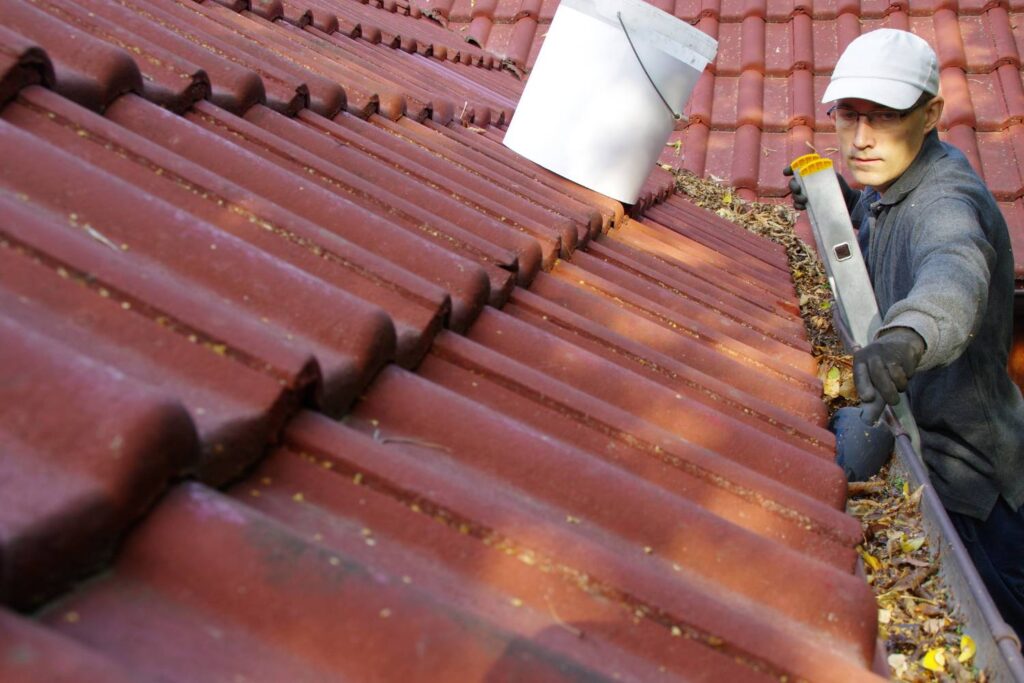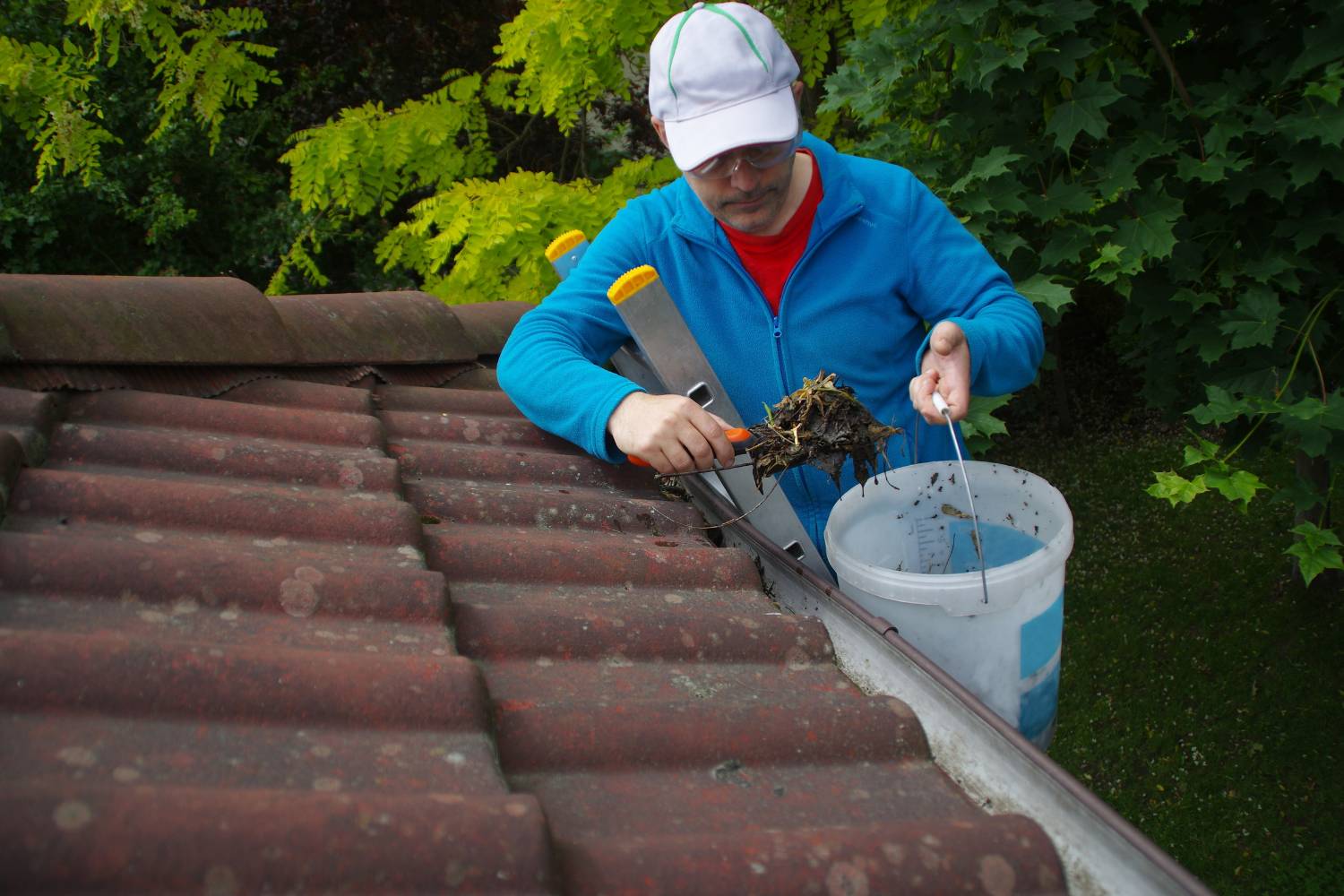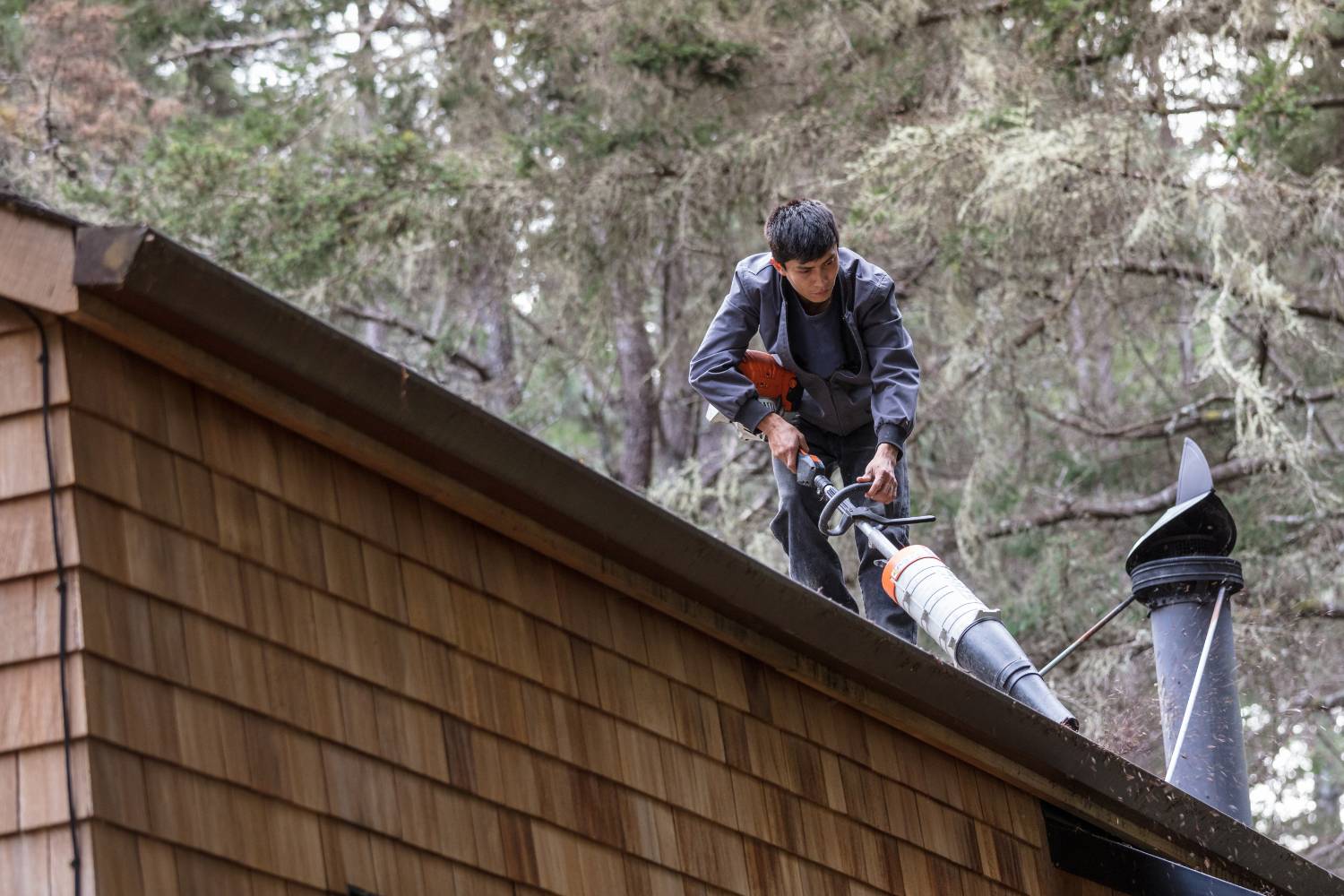Maintaining the cleanliness of your roof is more than just a cosmetic task; it's a vital part of ensuring the longevity and structural integrity of your home. While professional roof cleaning services are readily available, many homeowners find that the DIY approach offers substantial benefits.
From cost savings to the satisfaction of a job well done, DIY roof cleaning can be an effective way to keep your roof in top condition.
This guide will explore the advantages and considerations of DIY roof cleaning, including the tools and techniques you'll need to tackle this important home maintenance project safely and effectively.
What Are The Benefits Of DIY Roof Cleaning?
Cleaning your roof is a crucial aspect of home maintenance that ensures both the aesthetics and structural integrity of your home. While professional services are available, many homeowners opt for the DIY approach. Here are the benefits and key considerations for DIY roof cleaning:
Cost Savings
One of the most appealing benefits of DIY roof cleaning is the potential for cost savings. DIY roof cleaning is generally less expensive than hiring a professional, as you only need to invest in the necessary cleaning supplies and equipment, which can be reused for future cleanings. By doing the work yourself, you eliminate the labour costs associated with hiring a professional service, which can be a significant portion of the overall expense.
Convenience And Control
DIY roof cleaning offers greater convenience and control over the process. You can choose to clean your roof whenever it suits your schedule without needing to coordinate with a service provider. This flexibility allows you to work at your own pace and address any specific concerns you may have with your roof. Additionally, there is a personal satisfaction that comes from completing a home maintenance project yourself, knowing that you have directly contributed to the upkeep of your property.
Safety And Precautions
While DIY roof cleaning has its advantages, it also comes with inherent safety risks. Roof cleaning can be hazardous due to the potential for falls and injuries. It is essential to use proper safety equipment, such as harnesses and non-slip shoes, to mitigate these risks.
Understanding the correct techniques and precautions can further enhance safety. Gaining knowledge about roof structures and cleaning methods is beneficial and can help you avoid common pitfalls and accidents.
Effectiveness And Expertise
The effectiveness of DIY roof cleaning can vary. Professional cleaners have access to specialised equipment and cleaning solutions that might not be available to the average homeowner, which can result in a higher quality of cleaning.
However, with careful research and execution, you can achieve satisfactory results. It is important to be aware that incorrect use of cleaning tools or chemicals can damage roof materials, leading to costly repairs. Therefore, proper preparation and adherence to best practices are crucial for effective DIY roof cleaning.
Time Investment
Another factor to consider is the time investment required for DIY roof cleaning. This task can be time-consuming, especially if you lack experience. For those with busy schedules, dedicating the necessary time to thoroughly clean the roof may not be feasible. Additionally, there is a learning curve associated with understanding the best practices and techniques for roof cleaning. It may take additional time to research and become proficient in the necessary skills.
Maintenance And Longevity
Regular roof cleaning serves as preventive maintenance, helping to extend the lifespan of your roof. By routinely removing debris, moss, and algae, you can prevent these elements from damaging shingles and other roof materials. Furthermore, cleaning your roof allows for close inspection, enabling you to identify potential issues early and address them before they escalate into costly repairs. This proactive approach can save money in the long run and ensure that your roof remains in good condition.
What Tools Do You Need For DIY Roof Cleaning?
Cleaning your roof is essential to maintaining its longevity and ensuring the overall health of your home. By doing it yourself, you can save money and have control over the cleaning products used. Here's a comprehensive guide on the tools and precautions you need for a successful DIY roof cleaning project.
Safety Gear
Safety gear is crucial when cleaning your roof to prevent accidents and injuries. Non-slip shoes are necessary to prevent slipping on wet surfaces. Safety goggles will protect your eyes from debris and cleaning chemicals, while thick gloves will protect your hands from harsh cleaning solutions. A full-body harness is essential for working on slanted roofs to prevent falls, and a safety rope can be tied to a sturdy structure like a chimney for added security.
Cleaning Equipment
Several pieces of cleaning equipment are needed for effective roof cleaning. A sturdy ladder with rubber feet is essential to ensure stability while climbing. A broom or leaf blower can be used to remove loose debris, such as leaves and branches, from the roof. A garden hose with a spray nozzle is useful for pre-wetting the roof and rinsing off cleaning solutions.
A soft-bristle brush is ideal for scrubbing stubborn moss and algae without damaging the roof material. A spray pump is necessary to apply the cleaning solution evenly across the roof surface. If necessary, a pressure washer with a low PSI option (around 1200-1500) can be used to avoid damaging shingles or tiles.
Cleaning Solutions
Choosing the right cleaning solution is crucial to avoid damaging the roof and surrounding vegetation. An eco-friendly roof cleaner that is non-toxic and non-corrosive is recommended. Harsh chemicals like chlorine bleach should be avoided as they can cause significant damage. Sodium hypochlorite or sodium hydroxide products are effective for removing tough stains, but it is important to ensure they are safe for your specific roof material.
Steps For DIY Roof Cleaning
- Preparation: Before starting the cleaning process, it is important to prepare adequately. Check the weather and choose an overcast day with little to no wind to prevent the cleaning solution from evaporating too quickly. Inspect the roof for any damages, loose shingles, or flashing that need repair before cleaning. Remove debris using a broom or leaf blower to clear leaves, branches, and other debris. Protect your surroundings by covering plants and outdoor furniture with tarps or plastic sheets to prevent damage from cleaning runoff. Pre-wet the roof by spraying it with water to prevent the cleaner from drying too quickly.
- Applying the Cleaner: When applying the cleaner, mix it according to the manufacturer's instructions to dilute the cleaning solution. Use a spray pump to saturate the roof surface, starting at the bottom and working your way up to avoid walking on wet areas. Allow the cleaner to penetrate for the recommended time, which is usually specified by the manufacturer.
- Scrubbing and Rinsing: After applying the cleaner, scrub stubborn areas using a soft-bristle brush to gently remove moss, algae, and other stains. Rinse the roof thoroughly using a garden hose or a low-pressure washer to remove all traces of the cleaning solution. Make sure no cleaner is left behind to avoid damage and discolouration.
- Post-Cleaning: Once the cleaning is complete, inspect the roof for any missed spots or damages that need attention. Properly clean and store all tools and materials to keep them in good condition for future use. To prevent future stains, consider applying a stain-blocking solution that will delay the return of algae and moss.
How Do You Remove Moss And Algae From Your Roof?
Removing moss and algae from your roof is essential for maintaining its appearance and structural integrity. These growths can damage shingles, cause leaks, and reduce the overall lifespan of your roof. Here's a detailed guide on how to safely and effectively remove moss and algae from your roof, drawing from expert advice and practical tips.
Homemade Cleaning Solutions
A simple and effective homemade solution involves mixing equal parts of water and bleach. This mixture can kill moss and algae without damaging the shingles. Apply the solution using a sprayer, let it sit for 15-20 minutes, and then scrub the area with a soft brush. Finally, rinse the roof with water to remove any residue.
Commercial Moss Removal Products
Commercial products specifically designed for moss and algae removal are often more effective and safer for the roof. These products typically contain ingredients like potassium salts or zinc sulphate, which are less harmful to surrounding vegetation. Follow the manufacturer's instructions for application, and ensure you rinse the roof thoroughly afterwards.
Copper And Zinc Strips
Installing copper or zinc strips along the roof's ridge can prevent the growth of moss and algae. When it rains, small amounts of these metals are washed down the roof, inhibiting the growth of these organisms. This method provides a long-term solution by creating an environment that is hostile to moss and algae.
Why Do Moss And Algae Grow On Roofs?
Moss and algae thrive in damp, shaded environments. Roofs, especially those under tree canopies or in humid climates, provide an ideal habitat. Over time, these growths can cause significant damage, including lifting shingles and trapping moisture, which leads to rot and leaks. Identifying and addressing moss and algae early is crucial to prevent these issues.
Preventing Future Growth
To prevent moss and algae from returning, maintain your roof by trimming overhanging branches to reduce shade and clear debris that can trap moisture. Regularly clean your gutters to ensure proper water drainage. Installing copper or zinc strips can provide ongoing protection against moss and algae growth.
What are the common mistakes to avoid when cleaning a DIY roof?
DIY roof cleaning can be a cost-effective way to maintain your home, but it requires careful execution to avoid causing damage. Here are some common mistakes to avoid to ensure your roof stays in good condition.
Using The Wrong Cleaning Solution
One of the most frequent mistakes homeowners make is using the wrong cleaning solution. Different types of roofs require different cleaning agents, and using the incorrect one can damage the roof's surface or strip away protective coatings.
It is crucial to identify the type of roofing material and choose a cleaning solution specifically designed for it. For example, asphalt shingles might require a different cleaner than metal or tile roofs. When in doubt, consult with professionals to determine the right product for your roof type.
Using High-Pressure Cleaning Methods
Using high-pressure cleaning methods might seem like an efficient way to remove dirt and stains, but it can do more harm than good. High-pressure water can damage the roof's surface, dislodge shingles, and cause leaks. It is best to use low-pressure or soft washing methods that are gentle yet effective in removing dirt, stains, and algae. These methods help preserve the integrity of your roof while ensuring it is thoroughly cleaned.
Taking The DIY Route Without Proper Knowledge
Attempting to clean your roof without proper knowledge and equipment can lead to serious damage and personal injury. Roof cleaning requires specific skills, expertise, and specialised tools. Without the proper experience, you risk damaging the roof and potentially injuring yourself. Hiring professionals who have the necessary training and equipment can ensure a safe and effective cleaning process, providing you with peace of mind and long-lasting results.
Taking Shortcuts
Roof cleaning is not a task where shortcuts should be taken. Quick treatments or incomplete cleaning can leave behind residues that may cause future problems. Ensure you follow the cleaning process thoroughly and use the right equipment and methods for the job. Cutting corners may save time initially but can result in more extensive repairs and higher costs later on.
Conclusion
DIY roof cleaning offers numerous benefits, including cost savings, convenience, and a sense of accomplishment. However, it's essential to approach this task with the right knowledge, tools, and safety precautions to avoid potential risks and ensure effective results. By investing in proper safety gear, choosing the appropriate cleaning solutions, and dedicating time to thorough preparation and execution, you can maintain your roof's cleanliness and extend its lifespan.
Remember, regular maintenance not only enhances your home's aesthetic appeal but also prevents costly repairs down the road. With careful planning and attention to detail, DIY roof cleaning can be a rewarding and practical aspect of your home maintenance routine.
Frequently Asked Questions
DIY roof cleaning can be safe if you take proper precautions. Always use a sturdy ladder, wear non-slip shoes, and secure yourself with a safety harness. It's also important to work in dry conditions and have someone nearby to assist if needed. If you're uncomfortable with heights or unsure about your safety, consider hiring a professional.
For DIY roof cleaning, you'll need a sturdy ladder, a garden hose with a spray nozzle, a bucket, and a variety of brushes (soft-bristle and stiff-bristle). Safety gear such as gloves, safety goggles, and non-slip shoes are also essential. Depending on your roof type, you might also need a roof cleaning solution or a pressure washer with a low-pressure setting.
While some household cleaning products can be used for roof cleaning, it's important to choose ones that are safe for your specific roof material. Avoid harsh chemicals like bleach, which can damage roofing materials and harm surrounding vegetation. Eco-friendly or specially formulated roof cleaning solutions are often the best choice.
The frequency of roof cleaning depends on various factors, including your location, the type of roofing material, and the surrounding environment. Generally, it's recommended to clean your roof every 1-2 years. However, if you notice significant moss, algae, or debris buildup, you might need to clean it more frequently.
Common mistakes in DIY roof cleaning include using a pressure washer incorrectly, which can damage shingles; neglecting safety precautions like wearing a harness and non-slip shoes; using the wrong cleaning solutions that can harm the roof; and attempting to clean the roof in poor weather conditions. Always follow safety guidelines and use the right tools and products for your roof.


